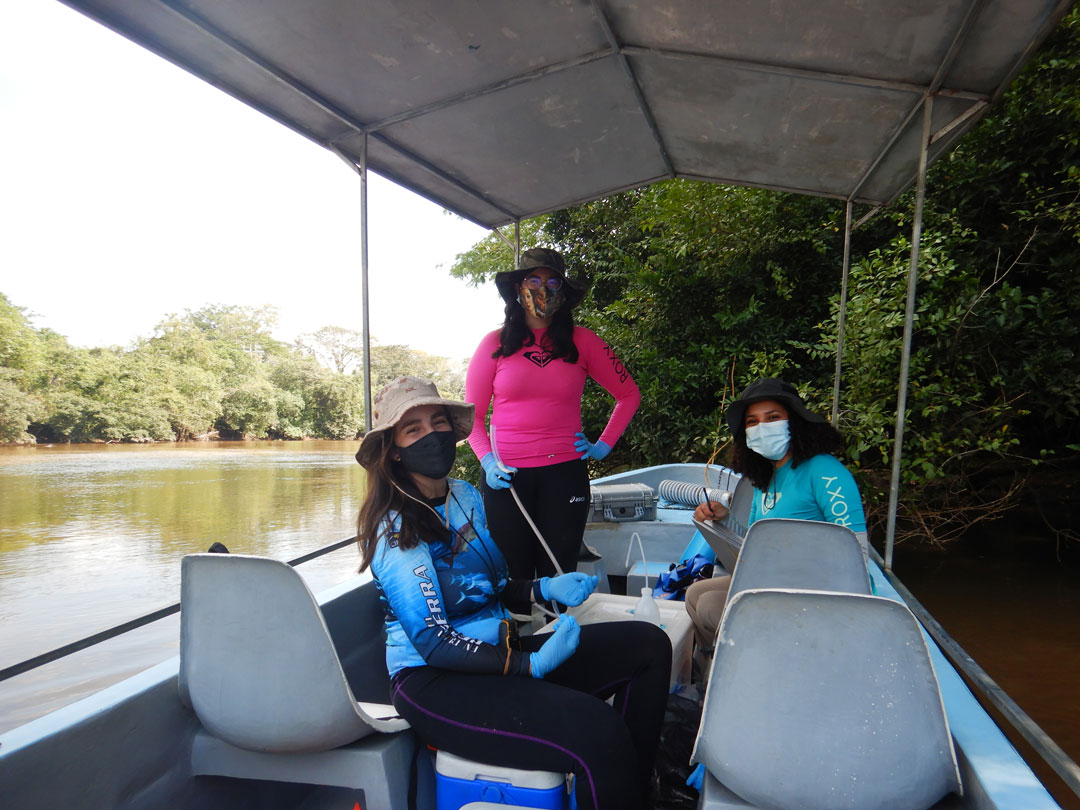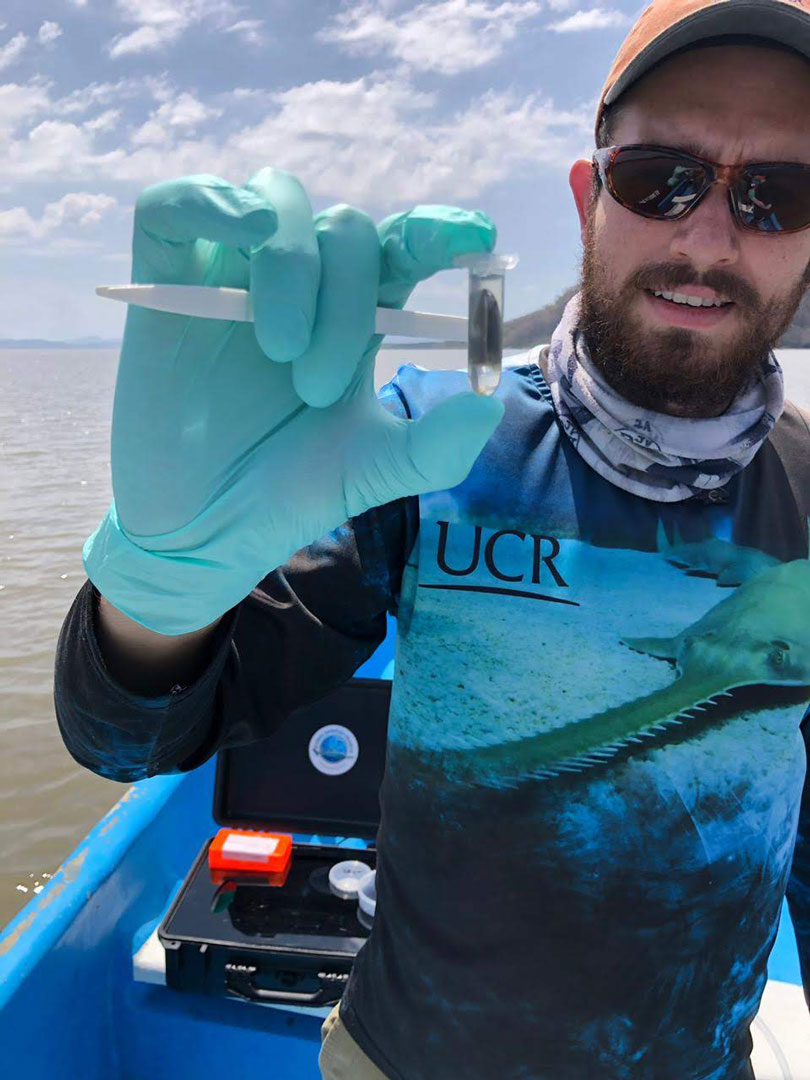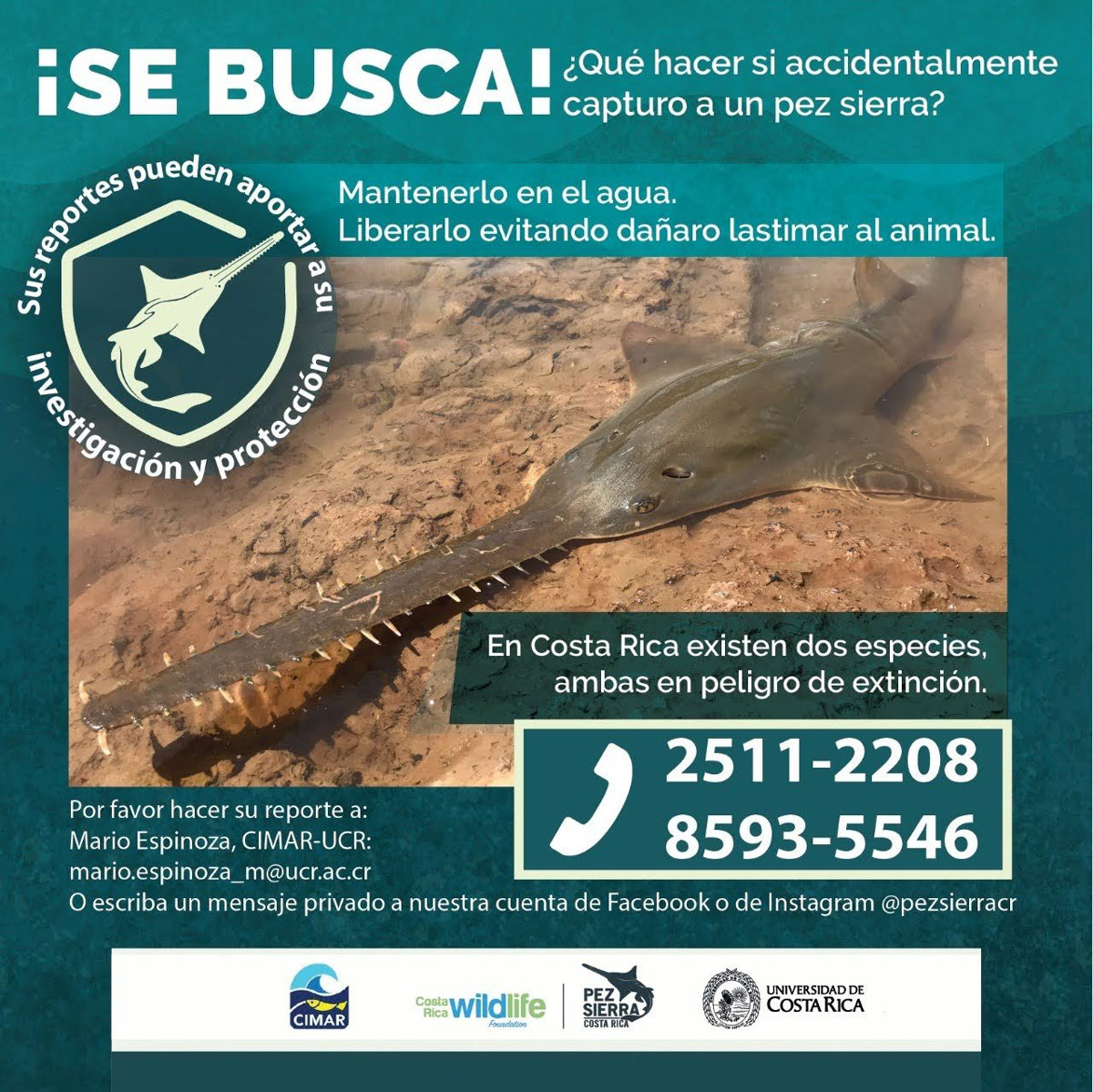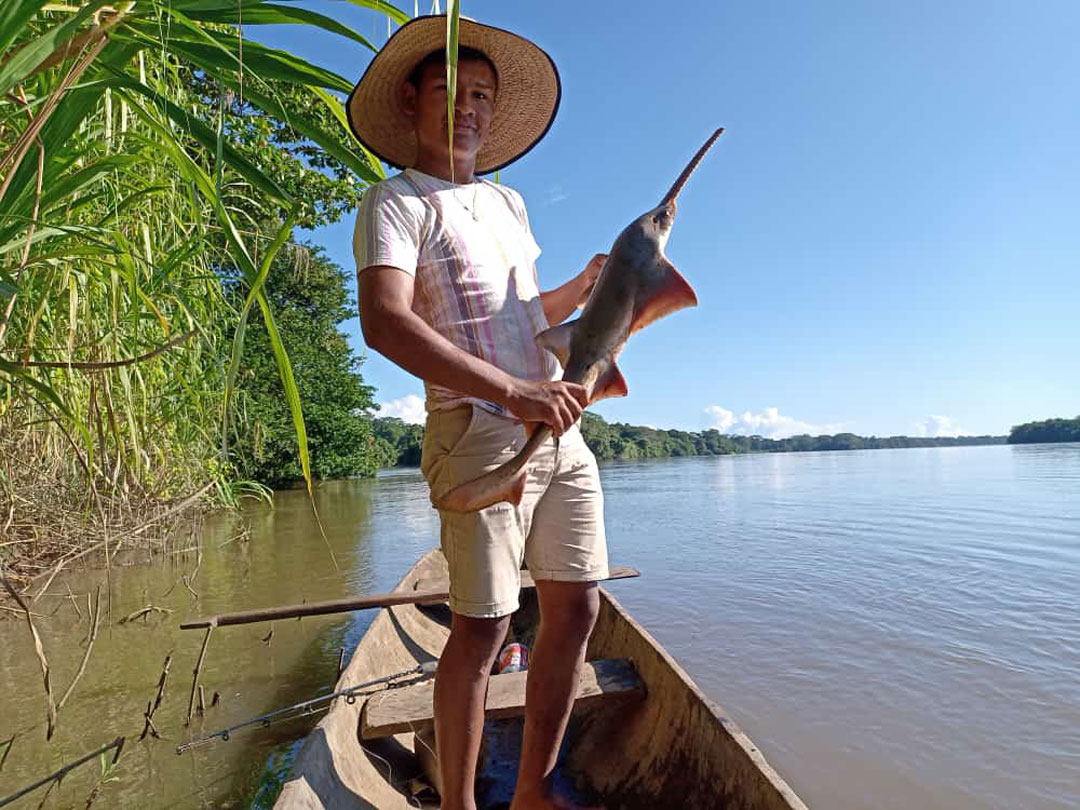A detective’s work
Tracing the steps of the largetooth sawfish in freshwater habitats of Costa Rica
Tracing the steps of rare and cryptic species in their natural habitats is often challenging and requires researchers to think outside the box to conduct some detective work. Bottom-dwelling species like the Critically Endangered largetooth sawfish (Pristis pristis) are typically found in turbid waters with lots of sediment, which makes them extremely difficult to notice in the wild. Moreover, largetooth sawfish populations have undergone severe reductions or have even experienced local extinctions throughout their distribution. Therefore, finding a largetooth sawfish in the wild requires of innovative ways to overcome all these challenges. Over the last decade, a recent technique called environmental DNA (eDNA) has improved our ability to detect rare or cryptic species in the wild. Even in aquatic environments, animals often leave traces of their genetic material (DNA) in the form of feces, saliva, urine, and skin cells. When properly collected and stored, this DNA can help researchers detect rare species in unthinkable places, which is crucial to identify key habitats that are important for conservation.

San Juan-San Carlos River, natural border between Costa Rica and Nicaragua and home of the Critically endangered largetooth sawfish. Photo © Mario Espinoza
Since 2016, we have used multiple approaches to gather essential information on the elusive largetooth sawfish in Costa Rica with the mission of recovering their populations. First, we conducted countrywide interviews between 2016 and 2017, which resulted in 134 confirmed records of the current and historical distribution of the species in the country and the identification threats affecting the species thanks to the ecological knowledge of locals living along the coast or in riverine communities. Then we carried scientific fishing surveys from 2017-2020 in remote areas of the northern and southern Pacific, and more recently in the northern Caribbean. However, despite all our efforts, we were unable to catch a sawfish in the wild. In 2019, we partnered with the Global Sawfish Search, an extremely important initiative led by Colin Simpfendorfer from James Cook University in which experts from around the world undertook eDNA surveys to identify critical habitats for sawfish species. During this global effort, we were able to confirm the presence of the largetooth sawfish in multiple sites. However, all positive detections were confined to freshwater habitats within the San Juan River (natural border of Nicaragua) and Barra del Colorado in the North Caribbean region of Costa Rica, despite our sampling also included estuaries and wetlands and a wide range of coastal marine habitats from the Caribbean and Pacific Ocean.

Getting ready for an important mission. Tracing the steps of Largetooth sawfish from environmental DNA (eDNA) surveys. Photo by Pedro Domínguez | © Nathalie Goebel-Otárola
Given that our initial eDNA countrywide survey allow us to identify the north Caribbean region of Costa Rica as a “hot spot” for sawfish, we decided to focus our subsequent eDNA sampling efforts to more areas within this region. For this next stage, we partnered with Michelle Gaither and Kathryn Greiner from the University of Central Florida to refine our search, as well as increase our understanding of sawfish habitat requirements that could predict their occurrence. Despite a low detection rate, we got seven positive detections along the San Juan – Colorado River system, further highlighting the need to direct and enhance our research and conservation efforts in this region.

One eDNA sample collected and many more to go for Jorge Valerio. Photographer: Daniela Solis | © Mario Espinoza
Our largetooth sawfish conservation work has also been characterized by having a strong social component, comprising of workshops, outreach material and activities, and a strong influence of social media, informative articles and press releases, among other. This has led people to know and get involved in our efforts to protect this iconic species, including citizen science reports of the species from local fishers, that from 2015 to now have accounted close to 35 reports of encounter with the largetooth sawfish.

Informative announcement of the about what to do if a person accidentally captures a sawfish and the contact information to report the encounter to our Sawfish conservation project. Designed by Patricia Blanco | © Mario Espinoza
Collectively, our local ecological knowledge studies, eDNA surveys and citizen science reports have identified the San Juan – Colorado River system along the north Caribbean region of Costa Rica as key region to strengthen largetooth sawfish conservation efforts and promote the recovery of the Western Atlantic subpopulation. The San Juan-Colorado River system is of particular importance as recent records include immature individuals of the species, which indicates the persistence of at least some breeding areas, and there are few known breeding areas for any species of sawfish outside of Australia and Florida. The eDNA technique was useful as a complement to confirm the presence of the species in this system, but it is not cost-effective in the long-term. The greater information comes from fishers’ encounters with the species, due to its interaction with gill nets and other fishing gear. It is fundamental to strengthen relationships with local fisher to encourage them to report sawfish catches. It is also relevant to evaluate social attitudes and human acceptance towards the largetooth sawfish together with the identification of habitat characteristics associated with its occurrence for the development of comprehensive management strategies.

The catch of the day! A young local fisher captured and successfully released a juvenile sawfish close to San Juan River in 2022. Photo by Heiner Salazar Pérez | ©Mario Espinoza
Each of the different approaches that we have implemented in our project, has contributed to gathering critical information on the species. Moreover, we have identified specific actions necessary to enhance the riverine and coastal habitats of Costa Rica as key to the local and regional recovery of the largetooth sawfish. Our Sawfish Conservation Project in Costa Rica will still use traditional techniques (e.g. scientific fishing surveys, as we recently were able to successfully captured, tagged and release a largetooth sawfish during our expeditions) combined with innovative techniques such as acoustic telemetry to try to answer questions that still have no answer about this species. Moreover, we have noticed the importance of designing management and conservation strategies together with local people from riverine and coastal communities, since they are they are the ones interacting closely with the natural habitats, therefore they have valuable knowledge about their surrounding and they are both, the ones directly affected and that directly affect management and conservations actions. Therefore, we will also integrate the identification of habitat qualities and social attitudes towards the largetooth sawfish in the socioecological systems in the northern and northern Caribbean regions to design comprehensive management and conservation strategies.
